René Walling
QuébecSF
Author Note:
Correspondence concerning this report should be addressed to René Walling.
Contact: [email protected]
Purpose
This report is a continuation of the work done in Worldcon Membership Demographics, 1939-1960 (Walling, 2016) and aims to see if any of the trends previously observed continue in subsequent Worldcon and provide some hard data on the membership of the Worldcons of that period.
Methodology
Fundamental Membership Data
The membership lists published in the WSFC sources for any given Worldcon, which consist of progress reports and program books, were compiled in one database indicating each person’s name and which Worldcon(s) they were a member of. In addition, membership lists form the registration records were used for several years (1962, 1968 and 1976). All data sources used are listed in Appendix A in chronological order by Worldcon.
Since the names listed in the progress reports and program books are only for those people who registered ahead of time, it is thus to be expected that the total number of names from WFSC sources does not match the total membership as reported in the Long List of World Science Fiction Conventions (hereafter the “Long List”), also referenced in Appendix A. In addition the Long List is based on a variety of documents, mostly fanzines and other convention publications, and most fans reporting on Worldcons at the time focused on the number of attendees – people who were physically present at the convention, not the number of members – people who purchased memberships to the convention in order to receive its publications by mail. It is also important to note that, for the same reason, the sample studied is not randomized.
Repeat Members
For data analysis spanning multiple Worldcons, the assumption is made that a name that appears in different membership lists always refers to the same person.
Obvious “joke” names are eliminated and multiple known pseudonyms for the same person appearing in a single Worldcon’s membership list are eliminated for the purposes of this study.
Gender identification
Gender determination based on name is commonly used to extract the otherwise unavailable data from lists of names. Three different methods were used to do so. For all of them, gender was first assigned based on honorifics. In addition, members who only had first name initials listed, as well as organizations and other non-human entities were assigned a gender of “Other.”
Method 1. The first method consists of consulting several websites (Behind the name, n.d.; Meaning of names, n.d.; Names, n.d.) on the meaning of names and assigning gender according to the gender listed in the website. In the case of names unlisted in any of these sites “Other” was selected as the gender. The same was done with gender neutral names.
Method 2. The second method is to run the list of names through the Genderize.io (Genderize, n.d.) application-programming interface (API.) Since Genderize provides a probability factor for the gender of each name, this can be used to assign a weighted estimate for gender neutral names. Names where the API returned a result of “null”, meaning they are not in the database consulted by the API, were labeled “Other”. If the gender of a specific person is known, it was assigned a probability of 100%, regardless of the result given by the API. The advantage of this method over method number three outlined below is that genderize.io incorporates not only first names, but also common nicknames, e.g. Jim, Pat, Liz, etc…
Method 3. The third method is to do a statistical analysis using the genderdata package (Mullen, 2015) for R (a statistical analysis software.) In addition to assigning a weighted estimate for gender neutral names, like the Genderize.io API, it also takes the estimated year of birth of each person into account. The downside is that for the time period concerned only data for the United States is available. This is mitigated by the fact that the large majority of Worldcon members at the time were from the U.S. This is supported by the souvenir books of those Worldcons that published membership maps. For year of birth, as the package can provide a gender estimate for a range of years, it was assumed that members registered for their first Worldcon between the ages of 18 and 40, inclusively. Again, if the gender of a specific person is known, it was assigned a probability of 100%. If the package did not return any results, meaning a name was not in the database consulted, it was assigned a gender of “Other”.
Results
The number of members listed over the entire 1961-1980 time span totals 33,279 for the WSFC sources, which represents 81.66% of the total from the Long List (40,752). The total number of individual members is 17,136.
Table 1 presents membership data for every Worldcon held between 1961 and 1980 inclusively. The first column shows the number of members according to the Long List. The second column shows the number of members compiled for this report from WSFC sources.
Figure 1 compares the yearly totals of the WSFC data (column 2 of Table 1) to those of the Long List (column 1 of Table 1). What can be seen immediately, is that for 1974 and 1975 the numbers of names listed greatly exceeds that of the estimated number of attendees. The same is true to a lesser extent for 1961, 1964, 1965, 1970 and 1979. This is likely because it was common for people to purchase a membership in order to support the convention, receive convention publications by mail, and not attend – this is referred to as a Supporting Membership and is a practice that continues to this day. The year with the smallest proportion of names listed are 1973 and 1980, both with slightly less than 50% of the membership as reported in the Long List.
Table 2 details the same WSFC data as a function of the number of Worldcons attended up to that point in time by members each year. We can then compile these numbers to know how many people attended only one Worldcon in the period surveyed, how many attended two, and so on. Details This compilation is done by looking at how many members return in a given year and which ones do not. Note that Table 2 takes into account Worldcons attended between 1939 and 1960.
The compiled results, shown in the last line of table 2, shows us that a large majority of Worldcon members only attended a single Worldcon, and the number of members goes down rapidly as the number of Worldcons attended increases and seems to follow an inverse logarithmic curve.
Figure 2 compares the number of first-time members (Column 3 of Table 2) to the total of the WSFS data (Column 2 of Table 2).
Table 3 compares first time members to the total of the WSFS data. Figure 3 shows the ratios listed in Column 4 of Table 3.
In Figure 2, we can immediately see that, in general, the larger a Worldcon’s membership was, the more new members it attracted. In fact the correlation coefficient between the two is high enough (0.94) to say there is a direct relationship between the two. We also see two surges in the total number of members, one in 1967 where memberships started to steadily remain above 1000 – with the exception of Heicon ’70, and the second one starting in 1974 where every subsequent Worldcon, with the exception of Aussiecon I, had more than 2000 members. In both cases the exception can easily be explained by the geographic location of the Worldcon: Heicon ’70 being , the first Worldcon held in a non-English speaking country and Aussiecon I being the first Australian Worldcon.
Table 4 shows the gender breakdown of each convention by year for all three gender determination methods used, as well as the averages (columns 4, 9 and 14 of Table 3) and standard deviations (columns 5, 10 and 15 of Table 3) for each value. The values given by the three methods are statistically close enough to be able to average them and use the standard deviation as the margin of error on the results.
Figure 4 shows us the gender balance by year using this average. We can see a general downwards trend in the proportion of male attendees with a jump downwards of 8% in 1968, after which, with the exception of Heicon ’70, it remained below 66.7% with a slight downwards trend followed by another jump down in 1978, this time of about 5.5 % after which it remained at slightly below 60%.
Table 5 shows the gender breakdown as a function of the number of Worldcons attended. The first thing that can be seen is that the number of people who attend a given number of Worldcons goes down as the number of Worldcons attended goes up. This approximately follows an inverse logarithmic curve.
As the number of members who attended seventeen or more Worldcons is very low, these cannot be used as a statistically significant sample, but the remaining members, i.e. those that have attended fewer conventions can be. Figure 5 gives us the same data in graph form for members who attended 16 or fewer Worldcons. The proportions remains steady up to five convention attended, after which the proportion of male attendees follows a slight upward trend.
In brief we can observe the following things:
– Compared to the previously surveyed period (1939-1960), more than five times the number of people attended Worldcon, indicating a tremendous growth in membership.
– Worldcons membership numbers underwent two significant increases and, with the exception of overseas Worldcons, was stable after each one.
– Unlike the previously surveyed time period (1939-1960), the composition of Worldcons memberships underwent changed in jumps after which it would remain relatively steady until the next jump.
Finally, it must be noted that the tables and charts presented reflect observations on the population of Worldcon memberships from 1961 to 1980, but do not explain on their own why any variations observed happened. In other words, they reflect the effect of events and not the cause of them. For this, further research would be needed. Questions of interest include:
– What major events in and out of fandom, particularly in 1967-68, 1973-74 and 1977-78 affected the membership of Worldcons both in terms of size and composition?
– Do what extent did the location of a Worldcon affect the size and composition of its membership?
– Does the size and composition of a Worldcon’s organizing committee bear a relationship to the size and composition of its membership?
– Does the number of program participants (panelists) and their composition bear a relationship to the size and composition of the membership of a Worldcon?
– Do any trends observed continue in subsequent Worldcons?
Appendix A
Convention, city and year
Seacon
Seattle
1961
Sources
Seacon Program Book. (1961, September). 29-31.
Chicon III
Chicago
1962
Chicon III Membership Roster. (1976.) Scan of typewritten convention staff document.
Discon I
Washington, DC
1963
Discon 1 Progress Report 1. (1963). 6-9.
Discon 1 Progress Report 2. (1963). 3-4.
Discon Program Book. (1963). 43-44.
Pacificon II
Oakland
1964
Pacificon II Program Book. (1964, September). 45, 47.
Loncon II
London
1965
Loncon II Programme Book. (1965, August). 17-18, 35-36.
Tricon
Cleveland
1966
Tricon Progress Report 2. (1966). 16-17.
Tricon Progress Report 3. (1966). 16-17.
Nycon 3
New York
1967
NyCon3 Program Book. (1967, August). 76-80.
Baycon
Oakland
1968
Baycon Program Book. (1968, August). 73-87.
Baycon registration records. (1968.) Scan of type- and hand-written registration staff documents.
St. Louiscon
St. Louis
1969
Saint Louiscon Program Book. (1969, August). 100-110.
Heicon ’70
Heidelberg
1970
Heicon Program Book. (1970, August). 43-74.
Noreascon I
Boston
1971
NorEasCon Souvenir Book. (1971, September). 104-113.
L.A.Con I
Los Angeles
1972
L.A.Con Program Book. (1972, September). 69-77.
Torcon II
Toronto
1973
Torcon 2 Programme Book. (1973). 79-85.
Discon II
Washington, DC
1974
Discon 2 Final Progress Report (#5). (1974). 18-39.
Aussiecon One
Melbourne
1975
AussieCon Progress Reports 1. (1974). 8-10.
AussieCon Progress Reports 2. (1974). 15-16.
AussieCon Progress Reports 3. (1974). 20-23.
AussieCon Progress Reports 4. (1975). 22-23.
MiAmeriCon
Kansas City
1976
MidAmeriCon I membership records. (1976.) Scan of computer printouts from the membership database.
SunCon
Miami Beach
1977
SunCon Program Book. (1977, September). 111-122.
IguanaCon II
Phoenix
1978
Iguanacon 2 Program Book. (1978, August). 78-86.
Seacon ’79
Brighton
1979
Seacon ’79 Programme Book. (1979, August). 90-128.
Noreascon Two
Boston
1980
NorEasCon 2 Progress Reports 1. (1978, December). 16-21.
NorEasCon 2 Progress Reports 2. (1979, May). 22-23.
NorEasCon 2 Progress Reports 3. (1979, November). 29-31.
NorEasCon 2 Progress Reports 4. (1980, March). 45-48.
References
Campbell, M. (n.d.) Behind the name: The etymology and history of first names. Retrieved from
http://www.behindthename.com
Genderize. (n.d.) Retrieved from
https://genderize.io/
Meaning of names. (n.d.) Retrieved from
http://www.meaning-of-names.com/
R Core Team (2015). R: A language and environment for statistical computing. R Foundation for Statistical Computing, Vienna, Austria.
https://www.R-project.org/
Mullen, L. (n. d.). genderdata: Historical Datasets for Predicting Gender from Names. R package version 0.5.0.
https://github.com/ropensci/genderdata
Names. (n.d.) Retrieved from
http://www.names.org/
Walling, R. (2016). Report: Worldcon Membership Demographics, 1939-1960. James Gunn’s Ad Astra (5). Retrieved from
http://www.adastrasf.com/worldcon-membership-demographics-1939-1960/

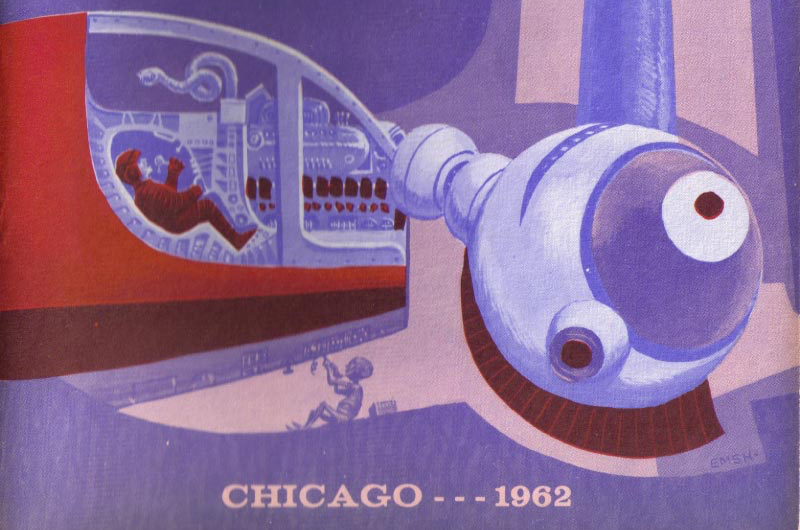
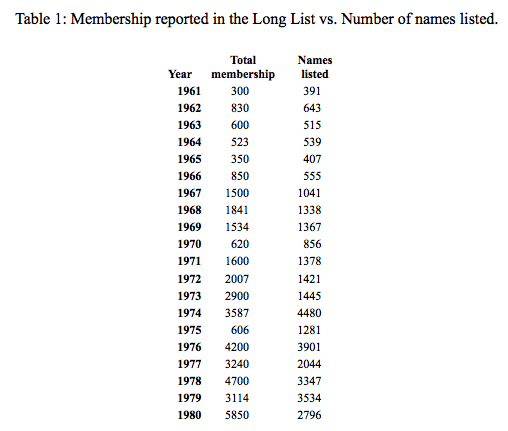
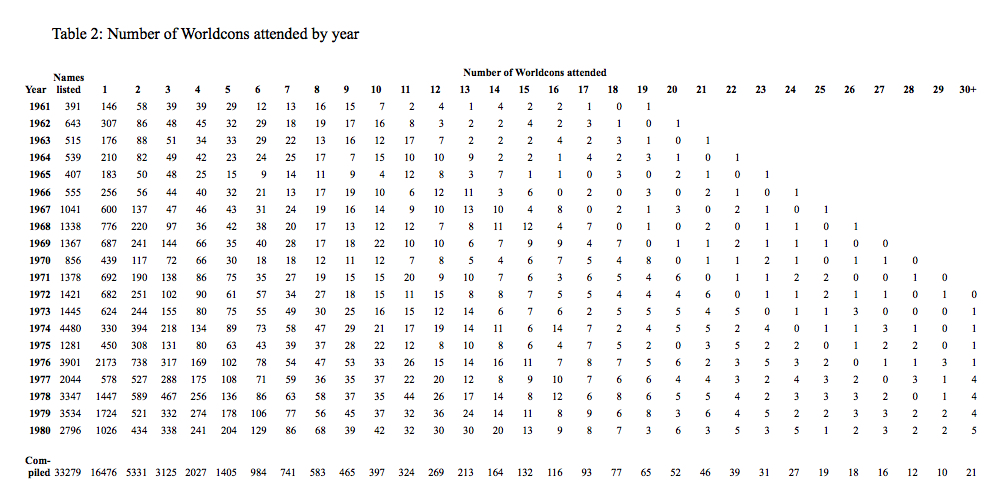
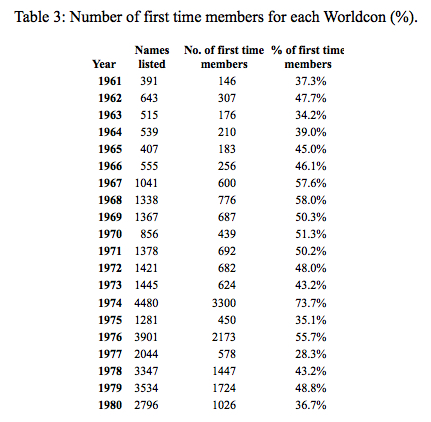
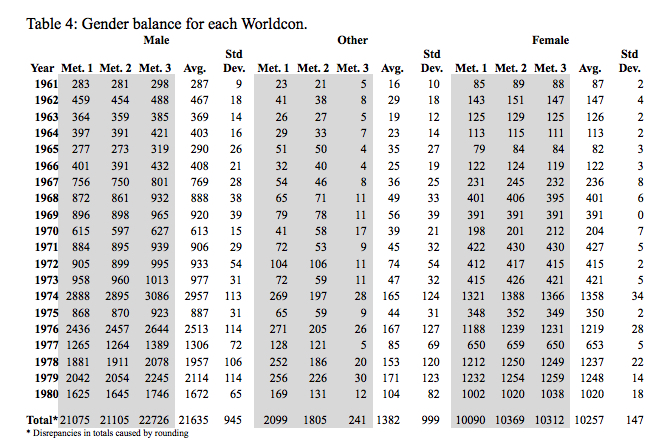
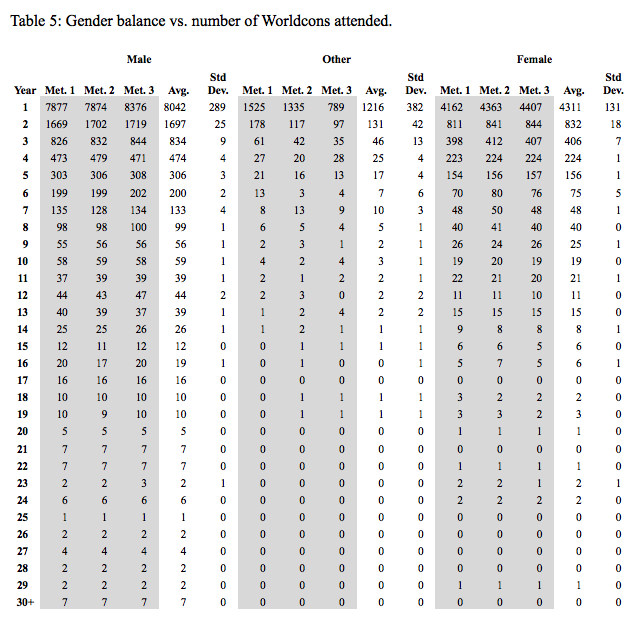
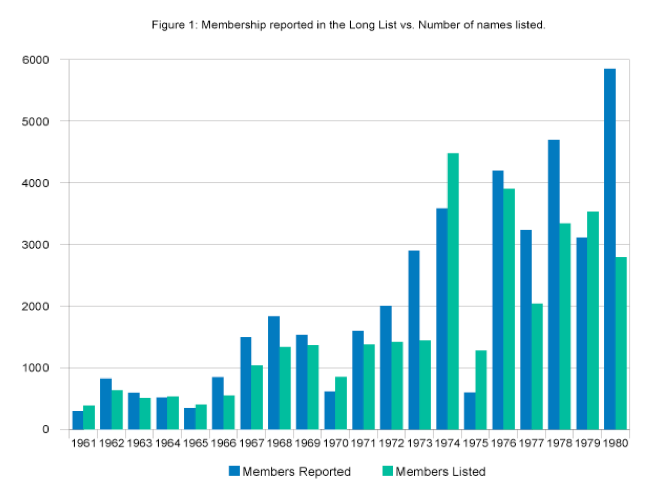
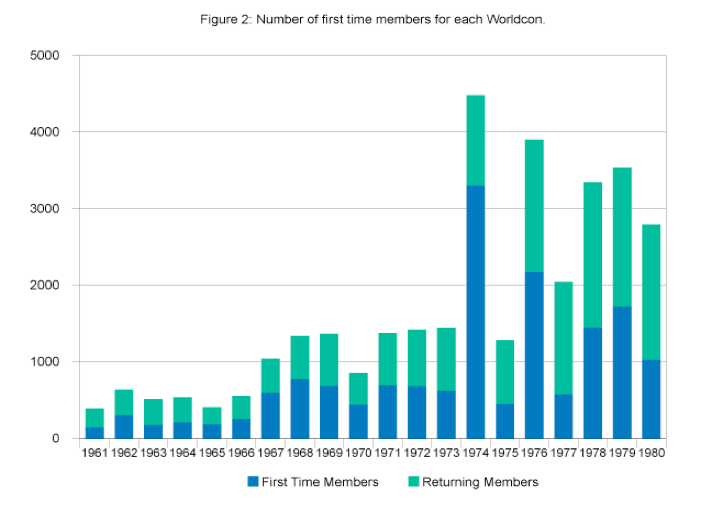
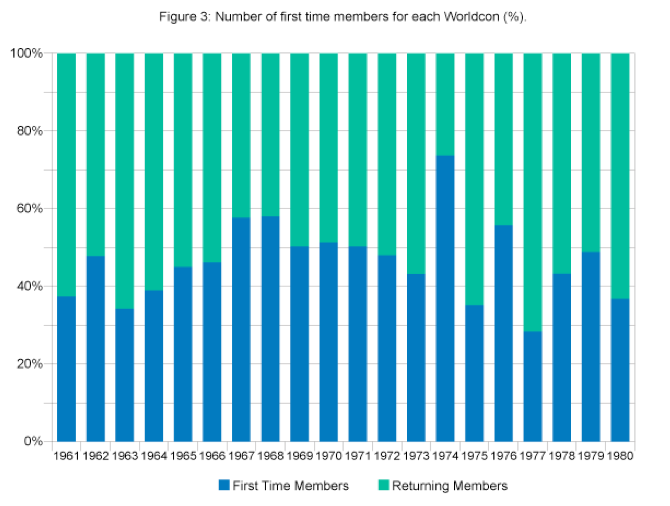
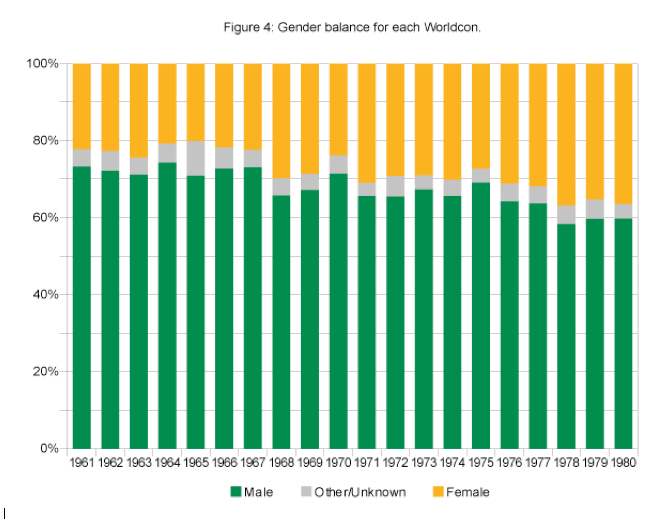
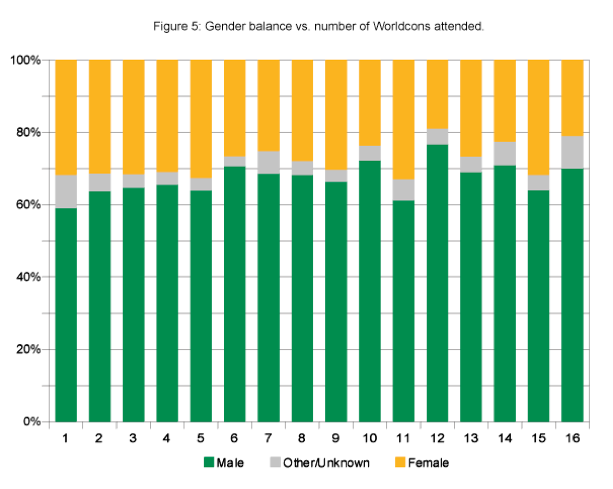
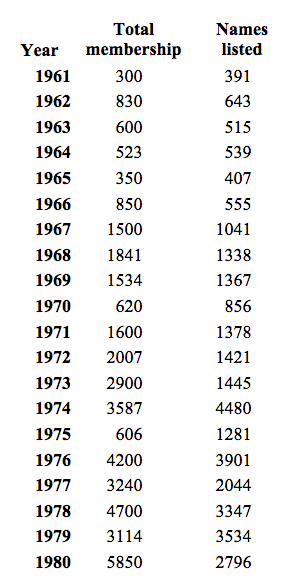
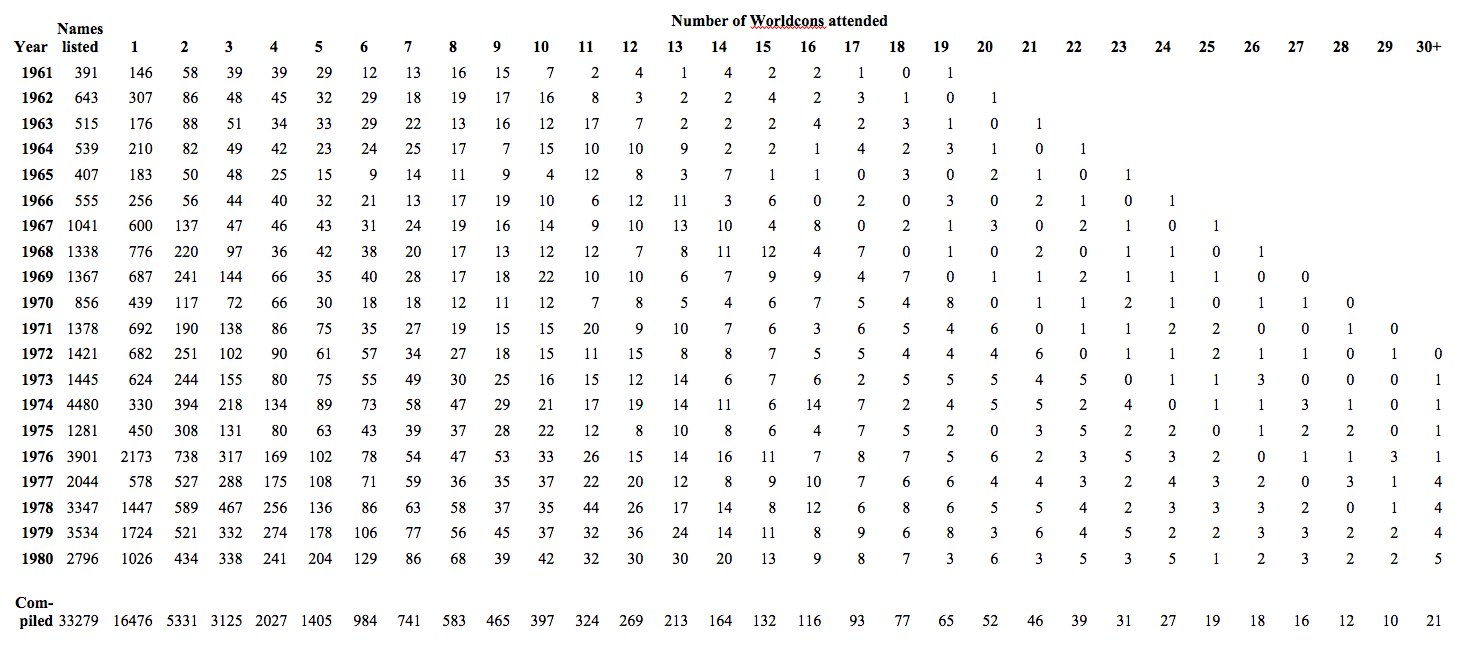
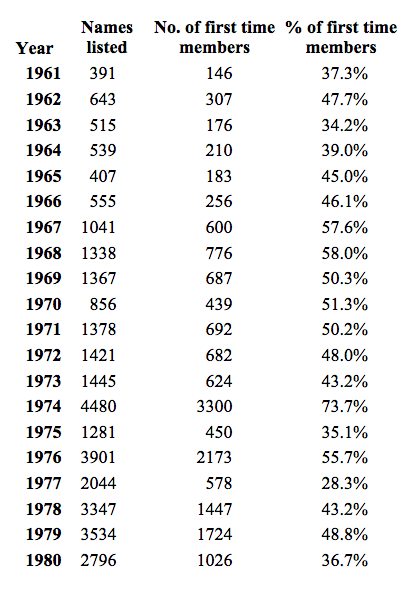
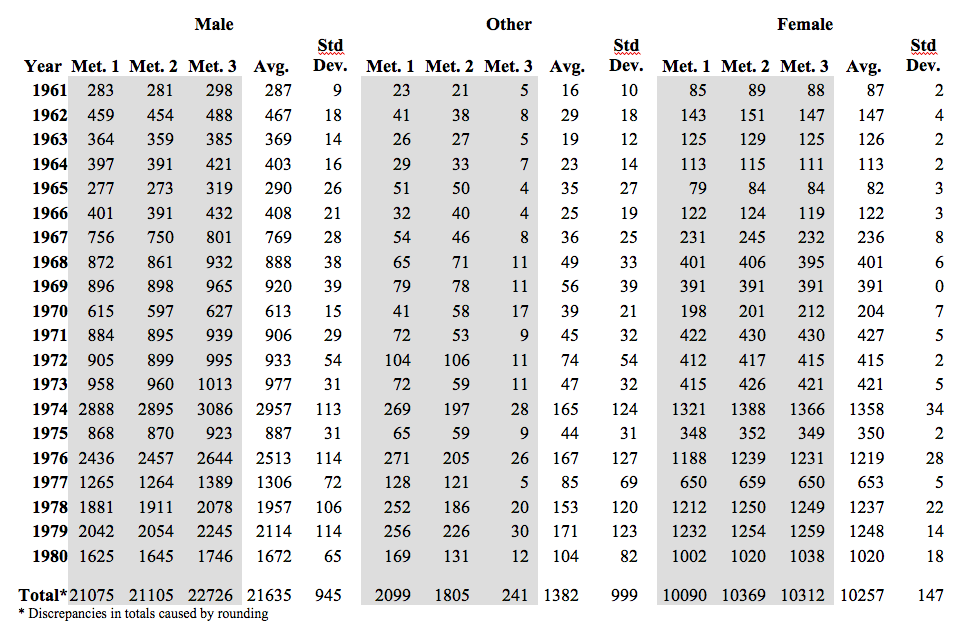
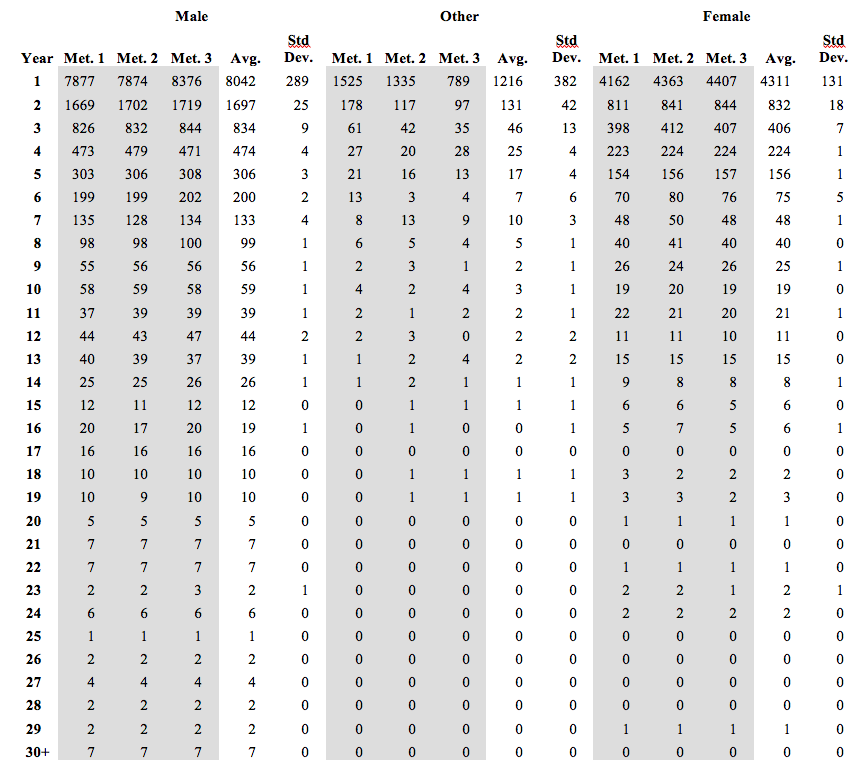
Leave A Comment